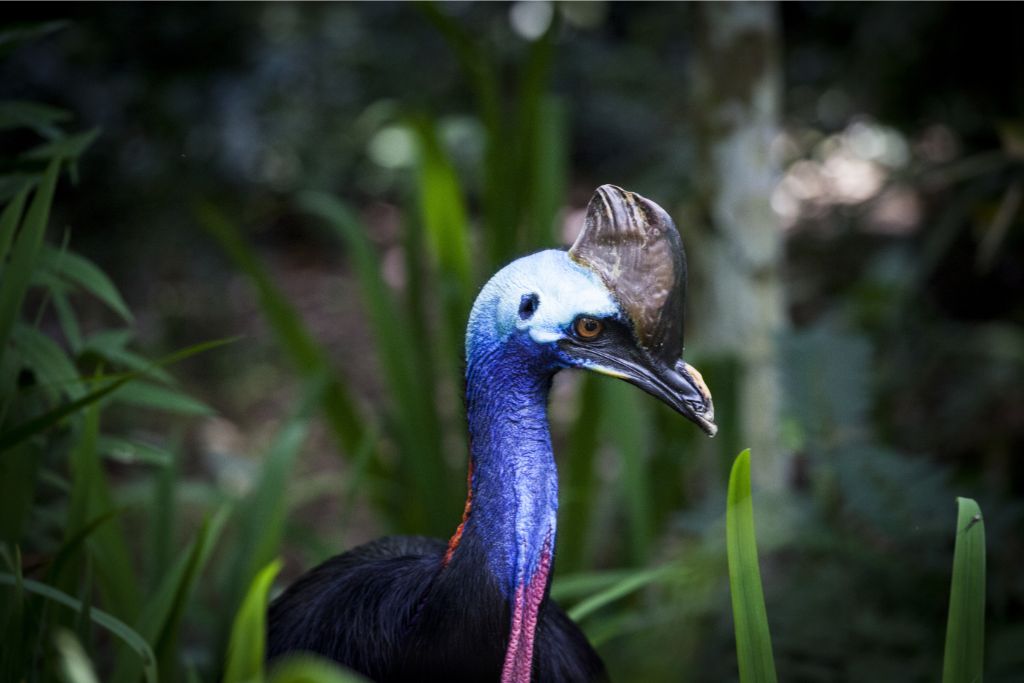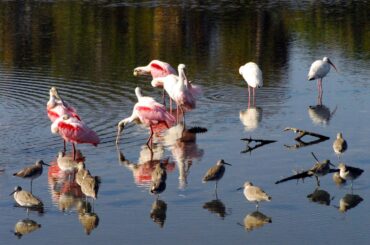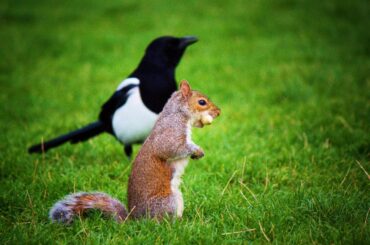Have you ever heard of a cassowary, the dangerous bird that has earned the chilling nickname “murder bird?” Or are you intrigued by encountering the world’s most deadly bird creature? If so, prepare to be captivated by the dangerous bird.
This bird is a formidable and potentially lethal bird species found in the depths of Australia’s wilderness. With its reputation for aggression and impressive physical attributes, this dangerous Australian bird is sure to pique the interest of any bird enthusiast or adventurer.
Discover the intriguing world of the cassowary and delve into the reasons why it is considered one of nature’s most formidable creatures.
The Cassowary’s Physical Traits
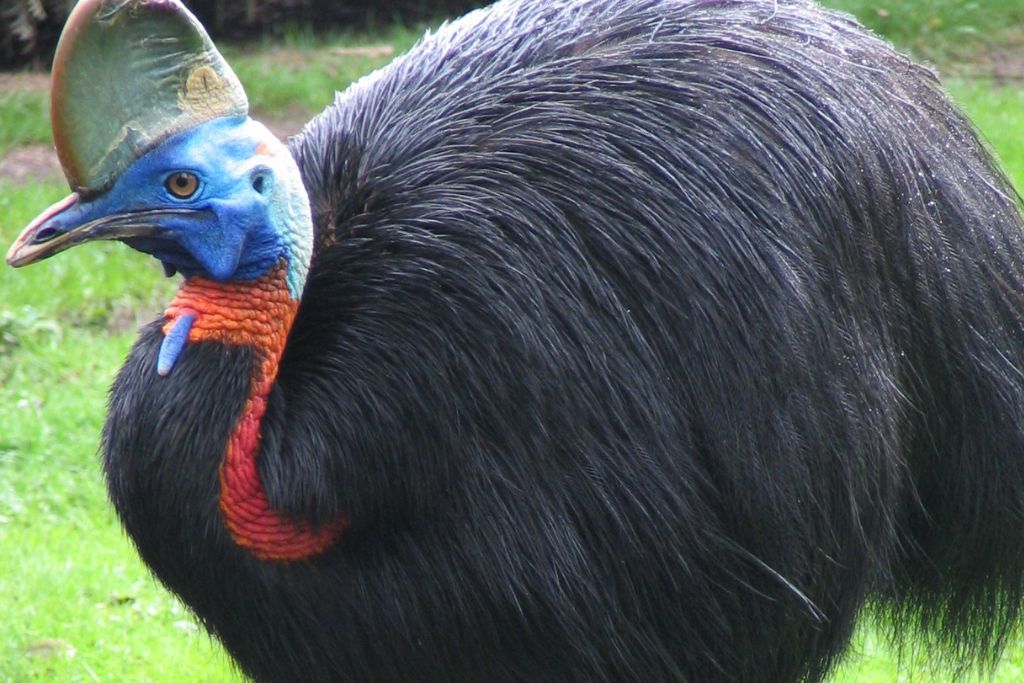
The cassowary is an awe-inspiring bird, known for its remarkable physical traits. Standing tall at an impressive height of up to 6 feet (1.8 meters), this creature is among the most giant flightless birds in the world.
This creature is formidable in the Australian wilderness, with a weight reaching up to 130 pounds (60 kilograms). Its distinctive appearance further sets it apart. It has a vibrant plumage that ranges from glossy black to vibrant blue hues, adorned with vivid patches of red and purple.
One of the cassowary’s most striking features lies in its powerful legs, designed for speed and strength. These legs allow the bird to reach remarkable speeds of up to 30 miles per hour (50 kilometers per hour) when necessary.
Its three-toed feet are equipped with sharp, dagger-like nails. These can seriously harm predators or any perceived threat. Additionally, the cassowary boasts a unique, bony structure called a casque on its head. This casque, resembling a large horn, adds to the bird’s distinctive appearance. It is believed to play a role in communication and protection during confrontations.
Behavioral Patterns of the Cassowary
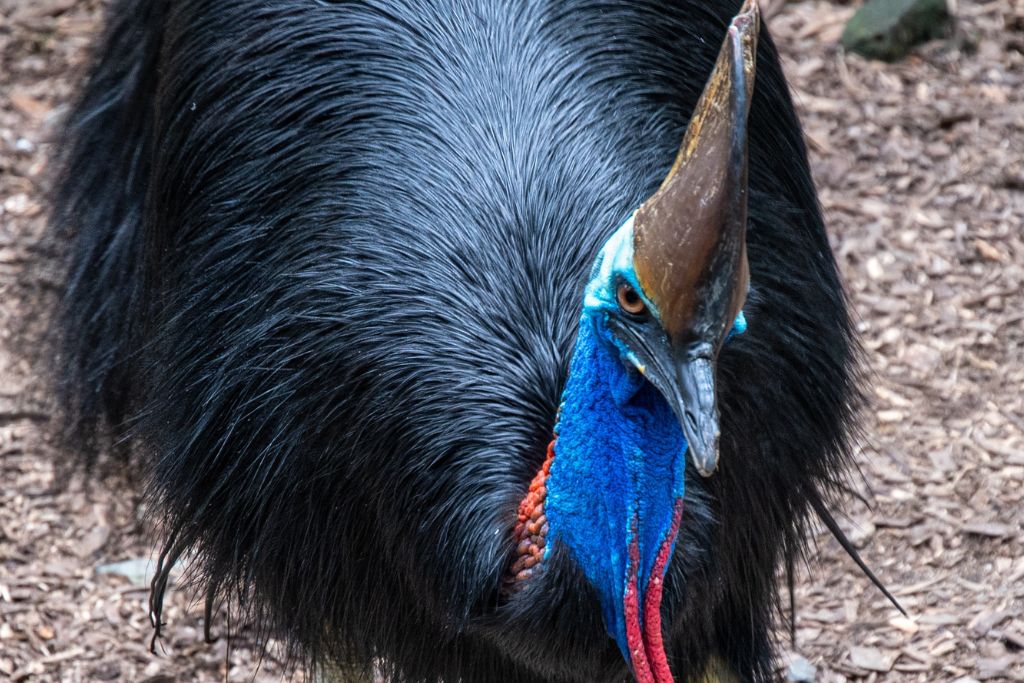
The cassowary is known not only for its great looks but also for how it acts, unlike any other bird. This bird is protective and can be aggressive when it thinks it is being threatened.
It is highly protective of its area, which can cover several square miles and won’t be afraid to fight for it. The cassowary is a guardian animal. This is especially true when it’s time to breed , as it becomes even more protective.
The cassowary has a powerful arsenal of ways to protect itself when facing danger. It can charge at high speeds and launch itself toward its goal with the help of its strong legs. Once close enough, the cassowary uses its strong legs to kick quickly and hard, which can cause serious damage.
Its sharp nails also come into play during these fights and can cause deep wounds. Possible abusers are likely to stay away from people who act this way. It helps the cassowary stay alive in a tough setting.
Unique Traits and Adaptations
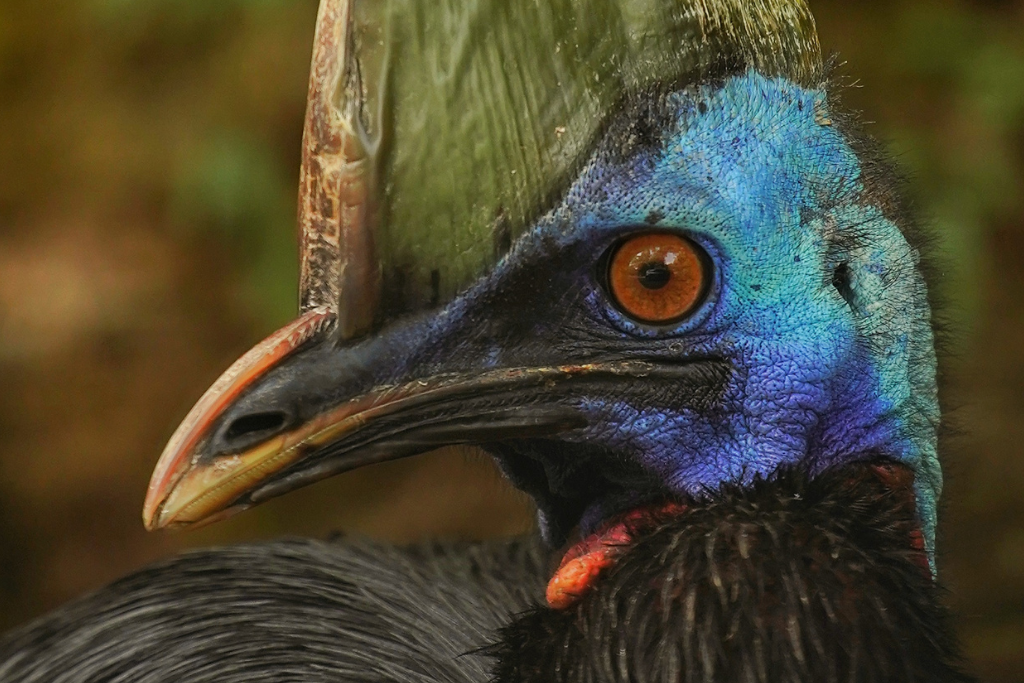
The cassowary’s unique traits and adaptations contribute to its remarkable survival strategies. One notable adaptation is its digestive system, which enables it to consume a diverse diet.
The cassowary is known as a frugivore, primarily feeding on fruits, but it also consumes foliage, insects, small vertebrates, and even carrion. Its digestive system is designed to process various foods efficiently. This allows it to thrive in different habitats and seasons.
Another critical adaptation of the cassowary is its solid and robust beak. This beak serves multiple purposes in the bird’s life. Firstly, it is an essential tool for foraging. The cassowary uses its beak to pluck fruit from trees or scrape fallen vegetation off the forest floor.
Secondly, the brim plays a crucial role in self-defense. When threatened, the cassowary can deliver powerful pecks with its beak, causing significant harm to its aggressors. This combination of adaptability and defensive capabilities makes the cassowary a genuinely remarkable and formidable creature in its environment.
Interactions with Humans
Interactions with the cassowary can be a complex and potentially dangerous affair. Due to its territorial nature and protective instincts, the cassowary may perceive humans and other animals as threats.
It is essential to exercise caution and respect when encountering these birds in their natural habitat. This is to avoid triggering their defensive behaviors.
Cassowary attacks on humans can result in severe injuries due to their powerful kicks and sharp talons. While such incidents are relatively rare, they occur, especially when humans approach too closely or provoke the bird.
To prevent conflicts, it is advisable to maintain a safe distance and observe the cassowary from afar. Additionally, raising awareness among local communities and visitors about respecting cassowary’s space and behavior can help minimize potential risks. It can also promote coexistence between humans and these fascinating birds.
Conservation Efforts and Future Outlook
Conservation efforts play a crucial role in protecting the cassowary, ensuring its survival in the long run. Many groups and organizations are actively working to safeguard this special bird and its home.
Conservation for the cassowary involves:
- Restoring its natural environment.
- Implementing programs to conserve the species.
- Spreading awareness about why it’s important to preserve what the cassowary relies on.
However, there are challenges we must address. Human activities, like deforestation and urban growth, are destroying the cassowary’s habitat, breaking it into smaller areas. This puts the bird at risk. Climate change also affects its home and food sources.
That’s why we must support conservation projects and initiatives.
Final Thoughts
The cassowary is essential to understand and respect the world’s most dangerous bird. When we learn about and appreciate this fantastic creature, we know how diverse and complex nature is. It reminds us that we must find a balance between humans and wildlife and learn to live together in peace.
Respecting cassowary’s home and behavior is about keeping ourselves safe and protecting the variety of life on Earth. When we understand how the cassowary fits into its ecosystem and take steps to keep it safe, we help save a culturally and ecologically important species.
FAQs
Are There any Recorded Incidents Involving Cassowary Attacks on Humans?
Yes, there have been recorded incidents of cassowary attacks on humans, resulting in severe injuries. But such incidents are rare and often occur when humans approach too close or provoke the bird.
Can Dangerous Birds be Kept as Pets?
No, keeping dangerous birds, including Cassowaries, as pets is not recommended. These birds have unique needs. They need specific habitats and can be aggressive and harmful to humans. They are best observed and appreciated in natural environments or managed wildlife sanctuaries.
Where are the Most Dangerous Birds Found in the World?
Worldwide, deadly birds are found everywhere. The Australian and New Guinea rainforests are home to the aggressive cassowary. Tropical Central and South America have hazardous birds, too, like the harpy eagle and Southern cassowary.
Why is the Cassowary the Most Dangerous Bird?
The cassowary is considered one of the most dangerous birds because of its territorial nature, powerful legs, sharp talons, and ability to inflict severe injuries with its kicks.
Is The Cassowary the Most Dangerous Bird?
Yes, the cassowary is commonly regarded as one of the most dangerous birds in the world. That is due to its aggressive behavior and physical attributes that make it capable of causing harm.

